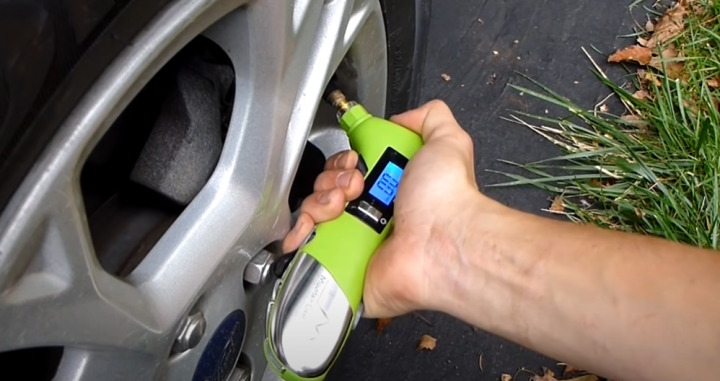Wonder why the tire pressure light of your vehicle glows? Guess what you are at the right place to answer all your questions. The tire pressure light of the vehicle notifies you to re-establish the pressure in the tires when it is necessary. Firstly, address the tire pressure in every tire then, attempt for the rebooting of light. The moment your tires achieve the appropriate pressure setting, the light may go on its own.
Still, there is a high chance that the sensor light may not dim instantly so, what to do? Driving for 10 minutes at 50 mph may help in the reset. If it doesn’t work out then, there are some other tips and tricks you can go for:
- You may also disengage the positive battery cable while the vehicle is not running. This is followed by turning the car on and thumbing the horn for at least three seconds. This results in removing the remaining power of the battery. On connecting, the tire pressure light should not blink.
- You may also consider options like overinflating all tires (including the spare) with 3 PSI and then going for a complete squash. Afterward, re-inflating will provide the desired results.
➔ If you are still facing issues, then you must go for some professional assistance.
Is TPMS the Same as Tire Pressure Light?

Tire Pressure Monitoring System commonly known as TPMS is a very important prospect and works as a proper electronic network/system. One of its components is tire pressure light, which gives a visual alert when the pressure is low. The TPMS monitors generally use either a direct or indirect method to analyze the tire pressure.
In a direct approach, TPMS utilizes pressure monitoring sensors connected with each tire to monitor tire pressure appropriately. It is more accurate and taken as an alternative to an indirect TPMS network. The batteries attached with these sensors are operational for about 10 years. Moreover, after tire rotation or inflation, direct TPMS systems are reset instantaneously. But, you need to have resynchronized sensors whenever you go for new tires, as it needs a special tool.
The indirect approach involves the calculation of the rate of rotation for each wheel via TPMS. If the tire is cycling faster and violating the calculated rate, the TPMS network alerts your vehicle’s computer that something is fishy with the rotation, and your tire pressure light glows. Manual reset of the monitor is a must in an indirect TPMS system.
Can Cold Weather Cause Your Tire Pressure Light to Go On?
Cold weather generally affects the air pressure in a vehicle’s tires. For every 10 degrees, your tires lose one / two pounds per square inch (PSI) that the temperature drops. Warm air expands while cold air condenses. Therefore, low temperatures result in less space acquired by the cold air in the tires of the vehicle.
It is quite common in the winter season that TPMS light illuminates for a short span in the morning, particularly colder days. But right after a short drive, the air is warmed and expanded, re-establishing desired pressure in your tires.
In case, the light is illuminated after 20 minutes of drive, more air is required to redevelop proper pressure settings. Low tire pressure is not an ideal condition regardless of the source.
Why is My Tire Pressure Monitor Light On When My Tires are Fine?
At first sight of your tire pressure monitor light turning on, make sure to inspect the individual pressure of your tires to start with. In most tires, 30 to 35 PSI of pressure is considered a universal estimation however this number may vary from manufacturer to manufacturer, so be sure to follow up with whatever instructions the manufacturer has proposed regarding tire pressure. Ideally, you should assess your tire pressure when the tires have been left unused for approximately 3 hours- a time considered to allow the tires to cool.
Checking your tire’s pressure is not something you should worry about. Just follow these steps:
- Locate a small cylindrical tube most commonly found on the bottom side of the tire’s rim keep a pressure gauge alongside you
- The tube you’ve located is the air valve for your tires
- Unfasten the cap on this valve
- Plugin your gauge
Your gauge will almost immediately showcase your tire pressure reading. It is most definitely a cause for concern if your tire pressure is optimal, and the TPMS is still flashing the pressure monitor light. It could indicate a faulty TPMS. In such a case, pay a visit to your local (authorized) vehicle service center as soon as possible to get your car the help it needs.
Is It OK to Drive with My Tire Pressure Monitor Light On?
The tire pressure monitor is more than often a vehicle’s lifesaver. Low tire pressure is sometimes taken very lightly, and warnings from pressure monitors get ignored. Such careless acts are what have directly contributed to over 700 deaths in the US just in 2017 alone, according to the National Highway Traffic Safety Administration. All of this is simply due to tire problems that could have been avoided if tire pressure was kept in check, a responsibility that your vehicle helps you out with.
Low tire pressure increases the exposure your tire has to the road, increasing the probability of hazards such as tires blowing out, and cars recklessly screeching down a 90 miles per hour road with just their rims to the surface.
Alongside the very obvious life-threatening problems low tire pressure creates, it also eats up a lot of your fuel. Just by keeping your pressures in check, you can save up to 11 cents per gallon of fuel in your tank. Running on filled-up tires also elevates tire longevity, saving you money and contributing a few thousand extra miles too (4,700 to give an exact number, don’t worry…we checked.).
Do I Need to Replace My TPMS When I Get New Tires?

It’s an understandable thought to have occurred in your head after replacing your tires, should one replace their TPMS after installing new tires? Also, you can reset tpms with obd2. Well, maybe you don’t have to. The TPMS is a modern piece of equipment designed to monitor air pressure on numerous types of vehicles with many variations of tires.
So, long story short, changing your tires won’t cause your TPMS to not function. However, it won’t harm you to simply get it checked if the TPMS is running efficiently and there are no malfunctions such as the one stated previously in this article. There are two types of TPMS systems, a direct and an indirect system.
This is really important because in a direct system, once new tires are fitted in, there is no need to tinker with the TPMS sensor settings. It is automated. However, in the case of an indirect TPMS, the sensors must be manually altered for the new tires.
Tweaking with TPMS sensors are best left to mechanics and technicians that have experience with machinery such as this, so every time you get a new system inserted, make sure only your mechanic is the one fiddling with the TPMS- since every new installation of the sensors calls for the system to reset its programming on the placement of every tire in your vehicle.
You can also receive guidance from your mechanic over when your TPMS needs a renewal, depending on the car you own. TPMS sensors are commonly used for around 10 years, but for aging cars, that estimate drops down to 5 or 6 years.
Final Thoughts
Hopefully, this article will help in clearing great misconceptions and lack of information regarding Tire Pressure Monitoring Systems. Now, you’ve got an idea of what to do when you’re caught up in very commonly occurring tire-related scenarios. Alongside this, you can also seek full professional assistance when you find yourself caught in a situation for all things tires.
With the experienced hands of technicians and mechanics you can solve every type of issue there is- be it just tire replacement or treating a broken TPMS you have got covered.
Thanks for reading!

As a mechanical engineer, it’s easy for David to explain the functionality of the tool. David test most of the tools before writing a review. its help him to learn something new and suggest the best product for you.





